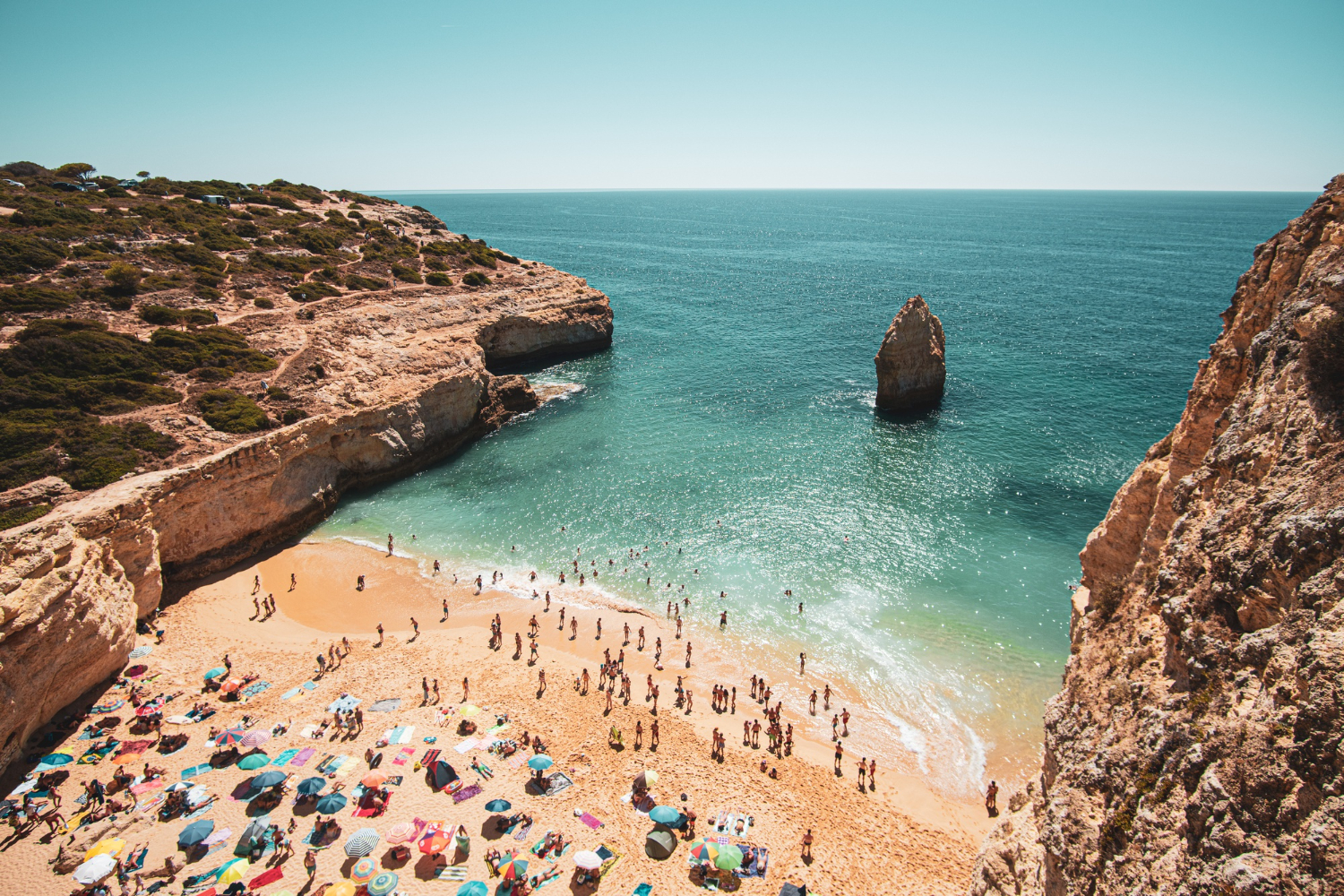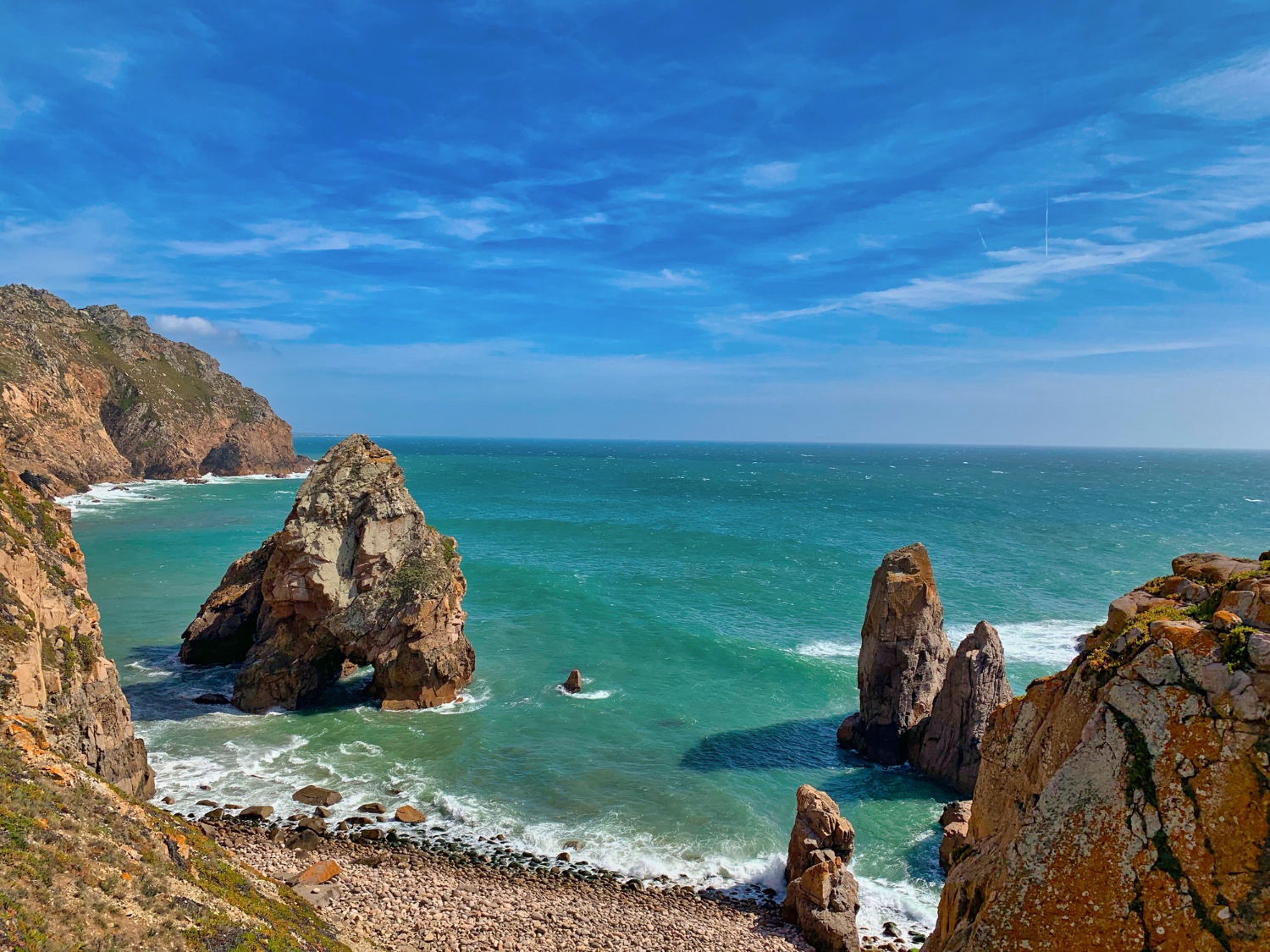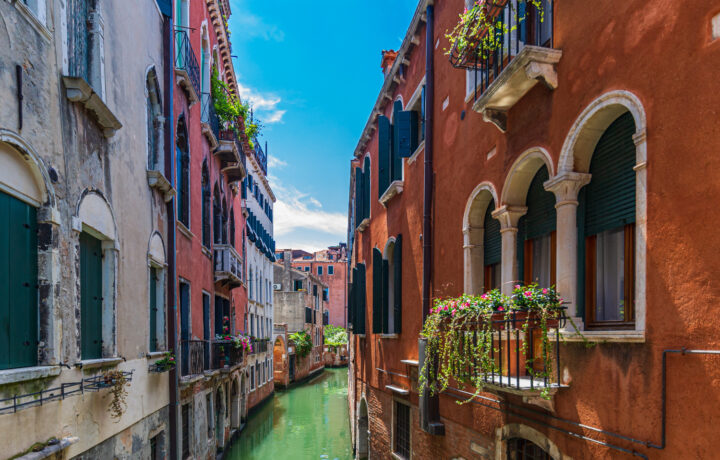You can surf, watch the sunset, and eat fish on these beautiful beaches in Lisbon…
People all over the world know that Lisbon is one of the best places to take a city break. You can get away from the city in this place because it has great weather, great food, a laid-back vibe, history, and culture. One thing that makes Lisbon stand out from other city breaks for us is how easy it is to get to a number of beautiful beaches.
The beach is, in fact, one of the best things about the Lisbon area. People who want to relax on the beach or learn about new cultures can both find what they’re looking for in the capital of Portugal. For those who’d rather spend their time at the beach than seeing the sights, public transport makes it easy to get to many beaches.
Because the weather in Lisbon is mild, you can enjoy being outside almost all year long (with a little luck). June, July, and August are usually warm and dry summer months. It stays sunny and warm until mid-to-late October, so you can still go to the beach after summer.
There’s something for everyone to do on Lisbon’s beaches, from water sports to eating bola de Berlim (Berlin balls) on the sand, which is a traditional Portuguese snack.
With help from Visit Lisboa, here are six beautiful beaches that are easy to get to from the city by public transport.
The beach at Carcavelos ist
You can get to Carcavelos Beach from Lisbon by train in less than 30 minutes. Both locals and tourists love it there. The beach can get very crowded in the summer because it is close to Lisbon and easy to get to. That is, it’s a busy place for people who like a little action on their beach day.
Locals play rounders on the sand, surfers ride the waves, people lay out in the sun, and families have fun here. This beach has everything: more than a mile of golden sand, great waves for surfing and bodyboarding, a busy walkway with cafes and restaurants, and places to rent beach and water sports gear. This is the place for you if you get bored at the beach.
The Fort of São Julião da Barra is at one end of the beach. It used to protect the entrance to the River Tagus from enemy ships and is still one of Portugal’s biggest sea defenses.
There is a train stop in Lisbon called Cais do Sodré that takes you to Carcavelos. The trip takes 26 minutes, and you can get to the beach from the station on foot.

Praia da Conceição and Praia de Duquesa, just outside of Cascais
The beaches of Praia da Conceição and Praia de Duquesa are right in the middle of Cascais. They are only divided by high tide, and both are very convenient and charming.
This stretch of beach is easy to get to from Lisbon and out of the way of the Atlantic waves. It has calm waters, a family-friendly vibe, and a big inflatable that kids can swim out to and climb over in the summer. There are also many services and restaurants nearby, which makes it one of the most popular beaches in the area.
To get there, take the Cascais train from Cais do Sodré station. It takes about 40 minutes, and the beach is only a 5-minute walk from the last stop.
The Tamariz Beach in Estoril
The beach called Praia do Tamariz is in the beautiful town of Estoril. It has a lot of history and mystery to it. The Grand Casino was built in 1935 in this beautiful seaside area. It used to be where the rich of Lisbon came to play. King Luís of Portugal even liked to eat it on holidays. It’s also famous for being the spot where Ian Fleming got ideas for Casino Royale, his first James Bond book.
Estoril became a safe place for people fleeing from all over Europe after the Second World War. A wide range of famous people looking for safety and comfort stayed at the town’s fancy Hotel Palácio. The famous author Antoine de Saint-Exupéry, the surrealist artist Salvador Dalí, the British intelligence officer and author Ian Fleming, and the Duke and Duchess of Windsor, Wallis Simpson, were all guests at the party. The hotel also became a hub for spying, with spies from many countries meeting and mingling within its luxurious walls, which added to the mysterious allure of the area.
The castle Forte da Cruz, built in the 1600s, adds to the historical fabric of Praia do Tamariz. This beautiful castle is a reminder of the area’s long history and shows how people defended themselves back then. It’s now a famous and high-end place to get married. A cute saltwater pool is right next to the beach for tourists and guests.
Today, Praia do Tamariz’s golden sand beach is perfect for families. The water is calm, there are rock pools, and there is a salt-water pool for kids that is warmer.
It doesn’t take long to get to Estoril by train from Lisbon’s Cais Do Sodre. The beach is only a short walk from the station.
The coast of Caparica
The Costa da Caparica has a 25 km sandy shoreline that locals love. It is only 10 km southwest of Lisbon, on the south side of the River Tagus. The waves are rough here, and you can feel the power of the Atlantic. It’s a surfer’s dream. In fact, the beach has been called one of the best places to surf in Lisbon many times.
Because Alfacinhas like it so much, Costa da Caparica can get very busy on the weekends. On the other hand, the long sandy beach makes for many places to relax. One of the best places to do that is at one of the beach bars, where young people gather to drink, dance, and watch the sun go down.
People can take public transport to the town with the same name, which has beaches with calm water and a lot of facilities. If you want a more relaxed vibe, there are spots farther down the coast that are less crowded.
How to get there: From Areeiro in Lisbon, take the 3710 bus to the town of Costa Caparica. The trip to the northernmost beaches takes 55 minutes. Transpraia is a mini-train that runs from the beginning of June to the end of September and makes 21 stops at beaches farther to the south.

The beach of Figueirinha is in the Arrábida Natural Park.
The largest beach in the Arrábida Natural Park is Praia da Figueirinha, which is also the only one that can be reached directly by bus from Setúbal, which is close by. This beach is great for families because the water is calm, there is an island to swim out to, lifeguards are on duty, and the hills make for a dramatic background.
Also, keep in mind that this beach isn’t as busy as others, so there aren’t any shops or food sellers there, so bring a picnic.
Getting there: From Lisbon to Setúbal, you can take either a train or a fast bus. Both take about the same amount of time and cost about the same. From the middle of June to the middle of September, take the 723 bus from Setúbal to Praia da Figueirinha. The ride takes about 25 minutes.
The beach at Ursa in Sintra
If you want to be alone, Praia da Ursa is a wild beach close to Cabo da Roca, which is the westernmost point of Europe. The beach is a wide escape into the Atlantic Ocean. You can only get there by hiking a trail, and it’s a quiet place known for its rough hills and interesting rock formations, like a bear-shaped sea stack.
Nature lovers will love this peaceful spot where they can lay out in the sun and explore the natural rock pools. Swimming is not advised, though, because the currents are too strong. Because it is so private, Praia da Ursa is also an unofficial beach for people who want to be naked.
How to Get There: From Lisbon’s Cais do Sodré stop, take the 40-minute train ride to Cascais. From there, take the bus to Cabo da Roca.
A Word About The Lisboa Card
For a one-time fee, the Lisboa Card lets you travel by bus, metro, tram, funicular, and CP train lines to Sintra and Cascais. It also lets you into 51 museums, monuments, and UNESCO World Heritage sites and gives you savings on tours, shopping, and nightlife. You can choose between 24 hours (€27), 48 hours (€44), and 72 hours (€54).




